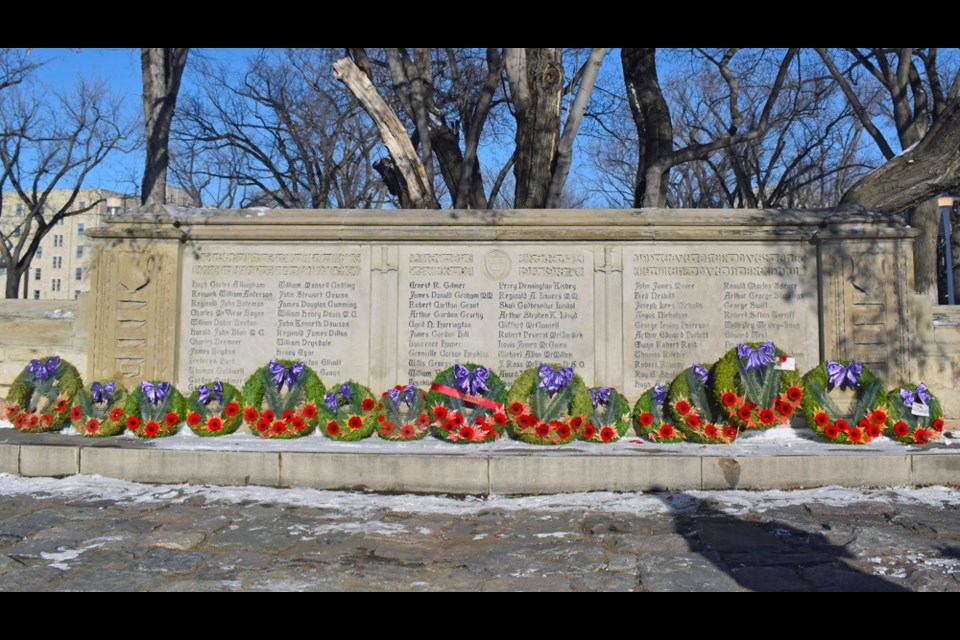SASKATOON — Elder Roland Duquette believes gathering every year to honour those who fought and died to preserve freedom is a time for grieving and a celebration of the sacrifices they made.
Despite the chilly afternoon, Duquette joined University of Saskatchewan officials and more than 50 individuals for the annual wreath-laying 小蓝视频 at the UofS Memorial Gates on Nov. 11, Friday. This tradition began 94 years ago.
Remembrance Day is observed every Nov. 11. It is also known as Poppy Day, where Canadians follow the tradition of wearing a remembrance poppy owing to the poppies in Flanders Field during World War I.
“This gathering is a celebration that we have. It is not just a grieving time. It’s a celebration time that we are here enjoying freedom for ourselves, our families, our communities and our country. We hold strongly to those values,” said Duquette, who blew the eagle whistle.
The whistle is considered a powerful spiritual object some Indigenous Peoples use in sacred ceremonies.
“Yet the atrocities that have happened, we still walk the land. We are the land. Canada is the land that we are. God has given us the time for each of us to know that we can keep working, to keep believing as human 小蓝视频s to work with each other.”
He added that everyone should enjoy and celebrate Remembrance Day despite the sombre mood and its meaning, where thousands sacrificed their lives to fight for freedom.
“Enjoy that celebration in your heart. Sometimes grieving is eternal, but we sometimes have to use that as a celebration,” said Duquette.
UofS Vice President for University Relations Cheryl Hamelin said the university has a long and proud history of men and women serving in the Canadian Armed Forces, with generations of alumni, faculty, staff and students enlisting since over a century ago.
“For the past 94 years, on this day, we have placed a wreath at the Memorial Gates in honour of those who made the ultimate sacrifice for their country. The Memorial Gates were unveiled in 1928, built as a memorial to the 345 [UofS] students, faculty and alumni who served in the First World War and in honour of the 69 who were killed overseas,” Hamelin said.
“Since then, more from our university community have gone to serve with more than 2,500 volunteering in the Second World War, including 202 who made the ultimate sacrifice. [UofS] faculty, students, staff and alumni have also gone on to serve in the Korean War and the Afghanistan mission.”
She added that UofS faculty, students, staff and alumni have also been part of various peacekeeping and humanitarian missions worldwide.
“Today, the Memorial Gates stands as a place to honour and remember the lives and stories who have served our country at home and abroad,” added Hamelin.
Julian Demikiw, UofS Secretary and Chief Governance Officer, said Nov. 11 every year is the day Canadians contemplate what Remembrance Day means to be a nation.
“This is also the day when we purposely reflect and respect our past to use that reflection to help shape our future. We pay our respects to the First Nations and Métis ancestors of this place and reaffirm our relationship with one another,” said Demikiw.
“Ninety-four years ago, [on Nov. 11], at [USask] first lay wreaths here at the Memorial Gates. We gather again to continue this tradition and honour all people who have served and continue to serve.”
The Memorial Gates were erected in 1927 to honour those who served from the USask in the First World War and in memory of those who died in battle. The 69 names of students and faculty are inscribed on the Memorial Gates.



